2010, 2013, 2015, 2017, 2022, 2023
In this ongoing photographic series, created in response to the racist archive that Louis Agassiz (1807–1873) helped to create with J.T. Zealy’s (1812–1893) daguerreotypes and Augusto Stahl's (1828–1877) photographs made in Rio de Janeiro during Agassiz's expedition from 1865-66, Huber takes self-portraits at natural sites named after Agassiz. There are 80 sites bearing Agassiz’s name, and the artist has visited seven since 2007 when the Demounting Louis Agassiz campaign began. Picturing herself naked, Huber, who is of Swiss-Haitian heritage, seeks to claim the space of the mixed-race subject, directly challenging Agassiz’s belief in the inferiority of mixed-race unions. Her vacant stare and full-body rotation disrupts the fetishistic objectification and inspection of the body represented in the images of Agassiz’s research. Huber’s self-representation of herself within the sights suggests a new kind of renaming and unveiling, one which positions the creolized subject as part of the process of human history.
Excerpt of Janice Cheddie's essay Landscape, Visibility and Memory in the Work of Sasha Huber published in the ARC magazine.
In Huber’s self-portraits taken in Furnas de Agassiz, Agassiz: the mixed traces series. Somatological Triptych of Sasha Huber (2010), the images of her naked body claims the space of the creolized subject, and as the creator of the photographs, challenges Agassiz’s belief in the inferiority of the product of black and white unions. Through her body Huber claims the space of representation and the right to construct narratives that challenge and question the assumptions of Agassiz’s theories. Her intense stare and the full-length long shots disrupt the erotic inspection of the body represented in Agassiz’s images. Huber’s self-representation of herself within the cave suggests a new kind of renaming and unveiling, one which positions the creolized subject as part of the process of human history.
Huber’s nude self-representation within the formal structures of landscape photography brings to the fore the connections between nature and culture, making a direct connection between the remnants of the Candomblé religion and a dialogue with the legacy of Agassiz. Creating an uneasy tension within her work, both Huber’s body and the Candomblé religion are products of the blending and transforming that have taken place in the Caribbean and South American landscapes. The intensity and aloofness of Huber’s gaze and posture evokes the rites and symbols of the powerful female priests and the spiritual and physical possession of the followers of Candomblé, whilst also evoking a refusal to be positioned as an object within the landscape.
Huber’s gender adds another layer and disruption to the image; in most Candomblé houses, especially the larger ones, the head of the family is a woman – a manifestation of female spiritual power and creativity. The two acts – Huber’s self-portraits and the presence of the Candomblé sect, represent a physical and spiritual rededication of the site, undercutting the meaning and power of the forgotten name of Louis Agassiz. Through the physical and cultural reclaiming of the land by the practitioners of the Candomblé religion, we are witnessing the Furnas de Agassiz site moving from a symbol of male power and prestige to a site of female spiritual and creative power. Even though the formal name of the cave retains the signature of Agassiz, Furnas de Agassiz has lost its purity, becoming a manifestation of the cross- cultural intermingling he feared.
Read about background from (T)races of Louis Agassiz: Photography, Body and Science, Yesterday and Today.
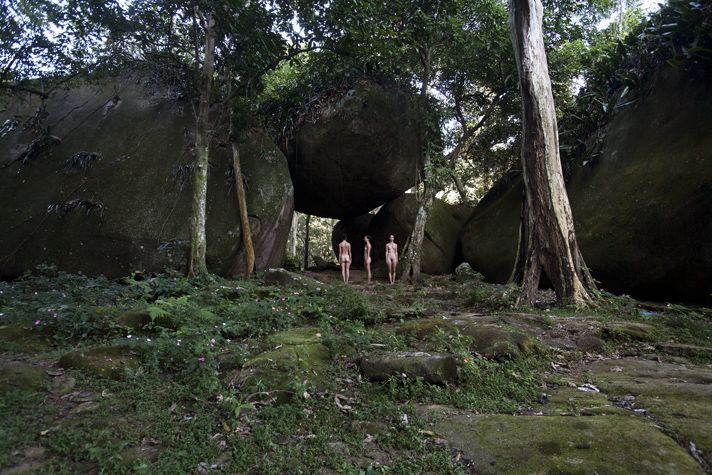
Sasha Huber, Somatological Triptych of Sasha Huber I, 2010. Fumas de Agassiz in the Tijuca Forest, Rio de Janeiro, Brazil. Commissioned photography by Calé. From Agassiz: The Mixed Traces Series, 2010–ongoing. Pigment on paper, 28 x 42 cm. Courtesy the artist.
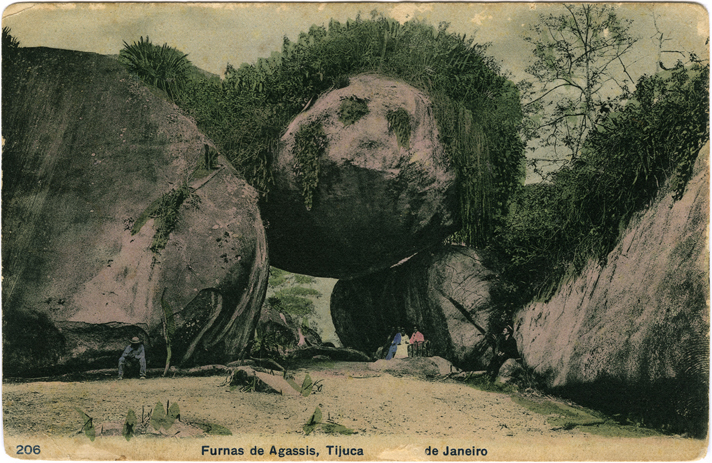
Postcard of Furnas de Agassiz in the Tijuca Forest, Rio de Janeiro, 1908.
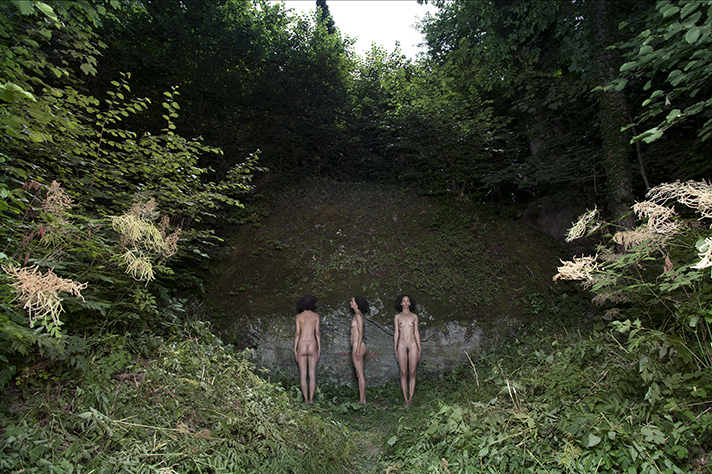
Sasha Huber, Somatological Triptych of Sasha Huber II, 2013. Mont Vully, Murten, Fribourg, Switzerland. Commissioned photography by Siro Micheroli. From Agassiz: The Mixed Traces Series, 2010–ongoing. Pigment on paper, 28 x 42 cm. Courtesy the artist.
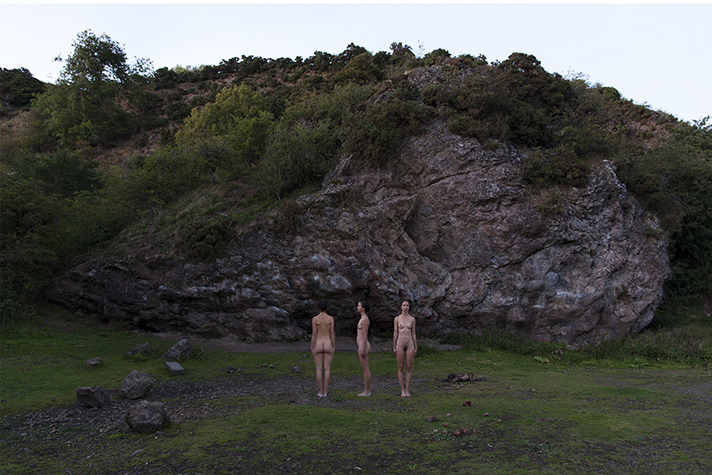
Sasha Huber, Somatological Triptych of Sasha Huber III, 2013. Blackford Hill, Edinburgh, Scotland. Commissioned photography by Peter Dibdin. From Agassiz: The Mixed Traces Series, 2010–ongoing. Pigment on paper, 28 x 42 cm. Courtesy the artist.
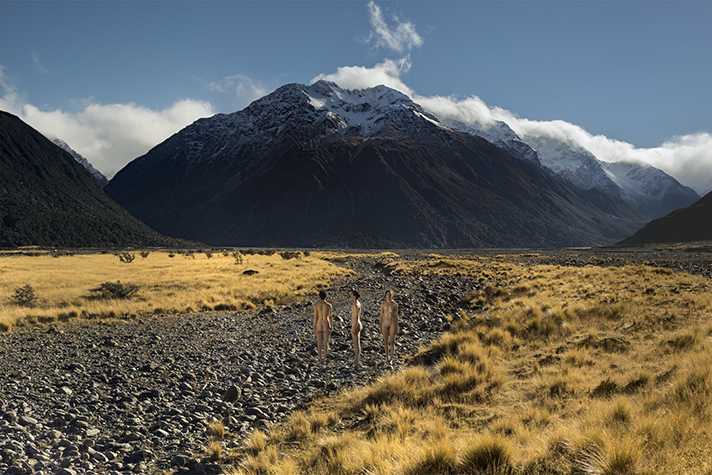
Sasha Huber, Somatological Triptych of Sasha Huber IV, 2015. Agassiz Range, Canterbury, South Island, Aotearoa (New Zealand). Commissioned photography by Tom Hoyle. From Agassiz: The Mixed Traces Series, 2010–ongoing. Pigment on paper, 28 x 42 cm. Courtesy the artist.
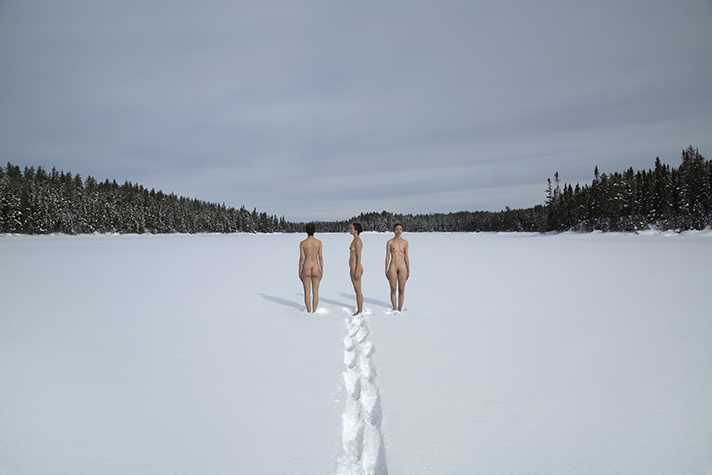
Agassiz: The Mixed Traces Series. Somatological Triptych of Sasha Huber V
Agassiz Lake, Quebec, Canada
Commissioned photography by Jake Hanna
2017
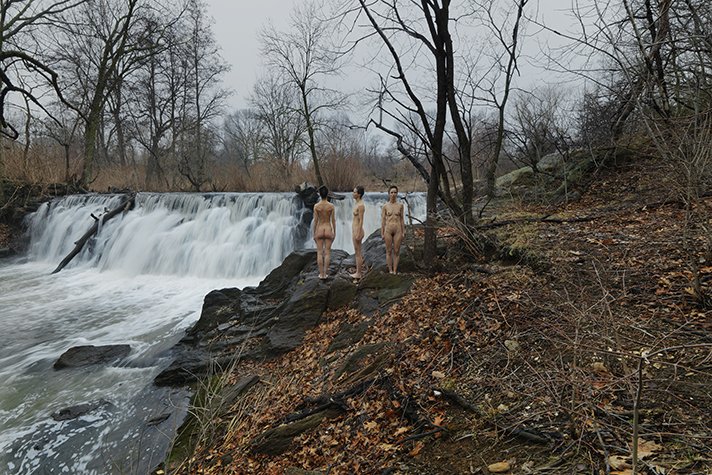
Agassiz: The Mixed Traces Series. Somatological Triptych of Sasha Huber VI
Falls Lake Agassiz, New York Zoological Park, Bronx, USA, 2017. Commissioned photography by Stephan Schacher.
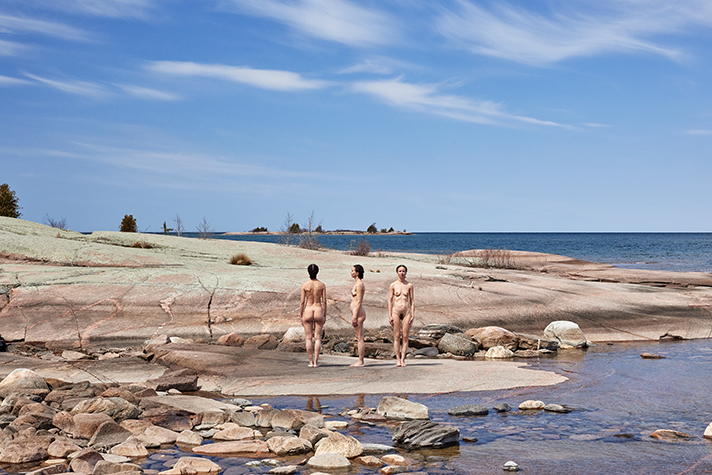
Sasha Huber, Agassiz: The Mixed Traces Series. Somatological Triptych of Sasha Huber VII, 2022. Agassiz Island, Lake Huron, Ontario. Commissioned photography by Daniel Ehrenworth. From Agassiz: The Mixed Traces Series, 2010–ongoing. Pigment on paper, 42 x 28 cm. Commissioned by The Power Plant Contemporary Art Gallery, Toronto, 2022.
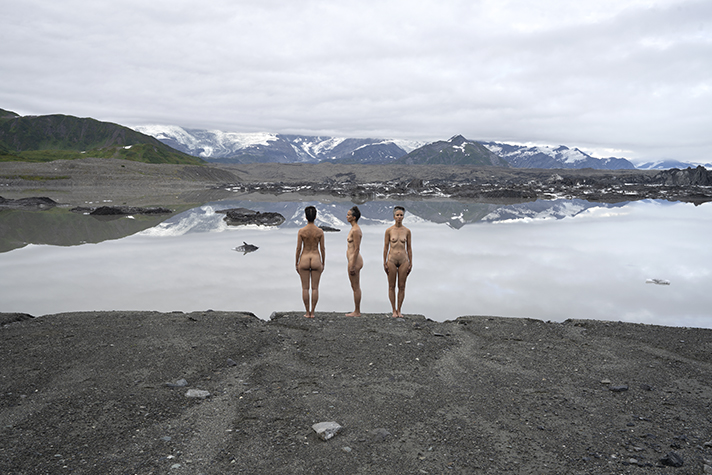
Sasha Huber, Agassiz: The Mixed Traces Series. Somatological Triptych of Sasha Huber I-VIII, 2023. Agassiz Lake, Agassiz Glacier, Alaska, USA. Commissioned photography by Jonathan Clabburn. Pigment on paper, 42 x 28 cm. Courtesy the artist.
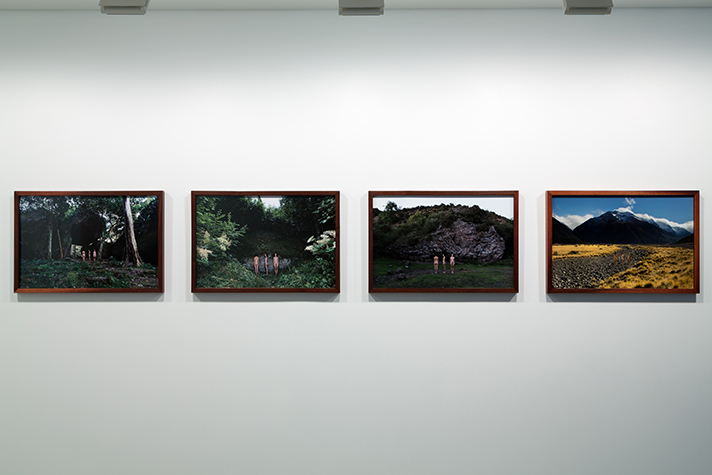
Sasha Huber, Agassiz: The Mixed Traces Series. Somatological Triptych of Sasha Huber I-IV, Furnas de Agassiz, Brazil 2010; Agassiz Rock, Switzerland, 2013; Agassiz Rock, Scotland, 2013; Agassiz Range, New Zealand, 2015. Pigment on paper, 60 x 40 cm.
Installation view at Agassiz Down Under solo exhibition at Te Whare Hera gallery in Wellington, New Zealand, 2015. Photo by Matthew Paterson.
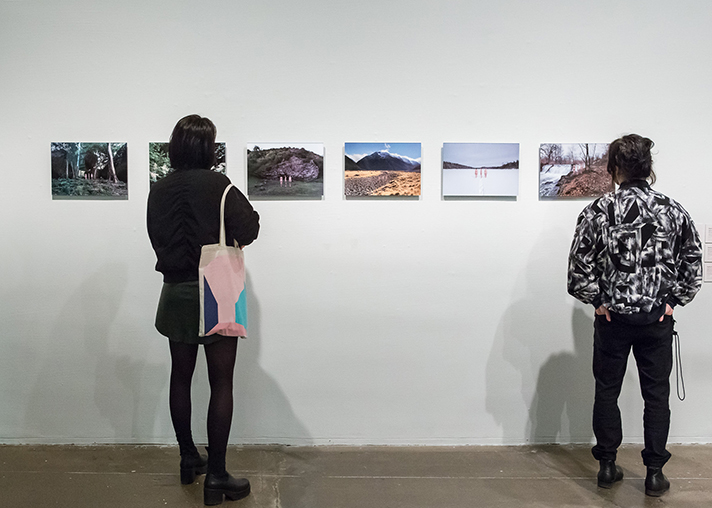
Mixed Traces Series at Nordic Delight touring group exhibition in museums in Oslo, Copenhagen, Kalmar and Helsinki, 2016-17.
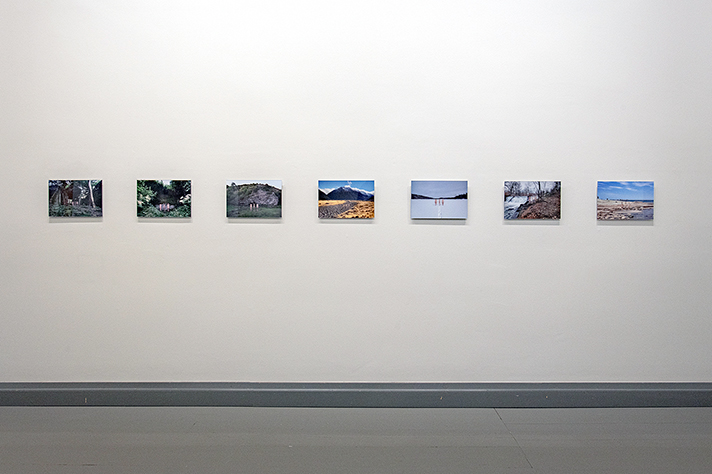
Mixed Traces Series I-VIII, YOU NAME IT, Turku Art Museum, 2023. Photo: Vesa Aaltonen.
